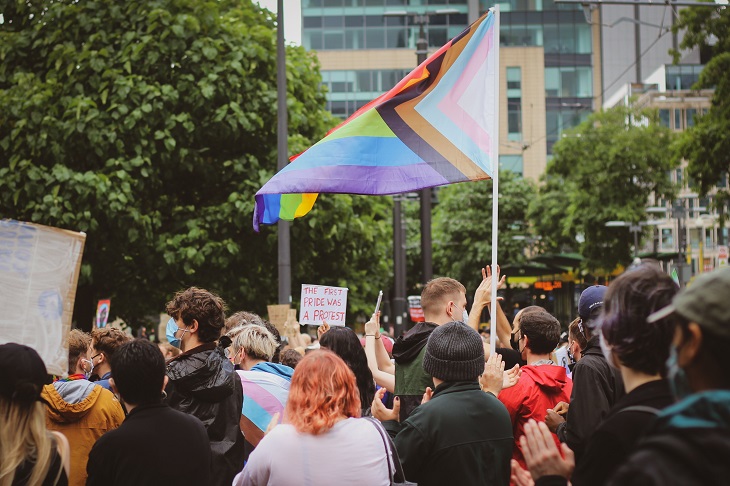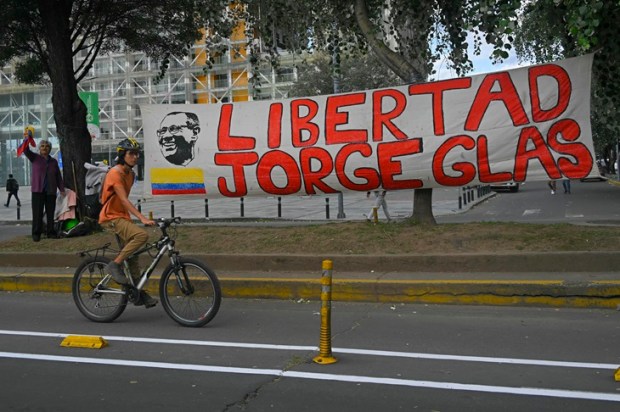‘One morning I shot an elephant in my pajamas. How he got into my pajamas I don’t know.’
I am not a philosopher, but I am blessed with enough common sense to know that Groucho Marx was exploiting a verbal fallacy in grammatical ambiguity.
Conversion therapy legislation is presented, and widely received, as incontestable, but is there more beneath the surface that needs public attention? Yes. Politicians are in the business of tricking and being tricked. They inhabit a world of fallacies, which often include the ‘strawman’ (attacking the misrepresentation of a valid argument), ‘bandwagon’ (50 billion flies cannot be wrong), ‘trusted authority’ (it is government-funded research), ‘false dichotomy’ (complex issues represented in cartoon simplicity), ‘over-generalisation’ (drawing firm conclusions on incomplete evidence), bait and switch (a policy proposal with one basis implemented by legislation on another), and ‘correlation is causation’ fallacies.
This article asks whether Victoria’s recent conversion therapy legislation exemplifies any fallacy. It is an important question since the human rights implications are enormous for the ‘perpetrator’, the ‘victim,’ personal freedoms, and the democratic process.
The very language of ‘conversion therapy’ legislation is freighted and misleading. It induces an eye-rolling groan in most decent people because of all the atrocities it evokes, of brutal last-century quackery that dreamed up harmful nonsense like testicular transplants, hypnotherapy, and clinical techniques resembling torture. In its religious applications, it brings to mind the enforced doctrinal conformity of the late Middle Ages.
Conversion therapy language also obscures the frightening reality that Victorian and ACT legislation bans harmless forms of help in the form of medical counselling, a compassionate chat which a teenager may want with their youth pastor, and even honest-to-goodness loving parental guidance.
Public perception of conversion therapy is understandably negative. One of the most pervasive myths about the Victorian conversion therapy legislation, and proposals now made for Tasmania, is that all the activities that feature in an exceedingly long prohibition wish list are harmful. Anyone reading the reports currently influencing change (one by Rainbow Health Victoria, La Trobe University & Human Rights Law Centre (PHPJ), the other by the Tasmania Law Reform Institute (TLRI)) would think that a scandal on the scale of the findings of the Royal Commission into institutional responses to child abuse had been uncovered. Or that a long-concealed wickedness is not only embedded but as the PHPJ report says is ‘pervasive in Australia’s mainstream, conservative Protestant Christian communities’. The reports should be read critically. Particularly if they are to bring about some of the most far-reaching restrictions on religious freedom this country has ever known.
Something most people may not know is just how far the prohibitions extend in the ACT and Victorian legislation, and in the Tasmanian proposals. What we used to understand simply as ‘same-sex attraction’ now covers ‘emotional’ and ‘affectional’ attraction, and ‘intimate or sexual relations’ including of a heterosexual kind. The prohibitions were mainly premised on two things: international conventions condemning torture and ill-treatment; and the harm of Biblical and other messaging said to be anti-LGBT. They now apply in quite diverse ways beyond that, for example, to someone providing help to an individual who just wants to preserve their marriage and family from the devastation that would result from their heterosexual ‘sexual relations’, through casual sexual encounters, or a porn habit. They may also be trying to live out their religious faith.
If anyone offers so much as a supportive prayer with them, or a word of encouragement or counsel, on the basis of their inclinations, to help the individual self-regulate according to their wishes, they are engaging in a damnable practice. Same for a mother and a gender-transitioning child. This reaches far beyond any meaningful concept of ‘conversion therapy’.
It beggars comprehension how such a legislative package has been sold with overwhelming success and without effective challenge. Certain linguistic phenomena might at least partly explain it. In logic, ‘equivocation’ produces the fallacy that different things which go by the same name are actually the same. In the syllogistic illusion presented by this legislation all practices that fall within a category of legislative prohibition are equated. Harm and the absence of harm do not distinguish them (it is supposed for them all); consent is to no avail.
So what does it matter if the legislation traded on a bit of semantics? The answer is that all legislation must pass a standard human rights analysis, and stay within the justifications which support it. Both reports nominally accept this, but the PHPJ report goes further with a major human rights pitch against conversion practices for contravening the international law prohibition of ‘torture, cruel, inhuman or degrading treatment’.
There is no need to explain how extreme techniques like aversion therapy involving electric shocks qualify as torture etc, but what of counselling, prayer, and other forms of Christian ministry? The PHPJ report failed to identify with any clarity the specific features that qualify practices for prohibition when it should have. It went the other way. It obscured matters by using what I estimate to be more than 25 different terms for the various practices it condemned. Instead of disambiguation the opportunity was enlarged for equivocation. A human rights analysis requires particularity, to avoid legislation like this, with immense blast waves.
The PHPJ report gives the impression it follows UN imperatives. It mentioned that the UN Independent Expert specialising in SOGI issues had recommended that States ban ‘conversion therapy’, but the PHPJ report failed to equate the practices it deplored with those the Expert had in mind. For example, it connected conversion practices to torture etc through the assertion that ‘the rationale for conversion practices is based on discrimination.’ It did this because the definition of ‘torture’ has various elements including ‘severe pain or suffering … intentionally inflicted for [various stated] purposes’ or ‘for any reason based on discrimination of any kind’ … etc. The PHPJ report failed to describe how the practices it associated with torture etc meet this and all the other prerequisites. Crucially it also never mentioned the point (so fundamental that the UN Special Rapporteur on Torture clarified it when discussing conversion therapy and related issues) that ‘discrimination’ has a particular meaning shared by numerous UN treaties. It is quite different from the concept used in Australia. It has a proper regard for the rights engaged.
Numerous rights are restricted by the Victorian bans on conversion therapy: the individual’s right to seek and receive counselling (freedom of expression) or Christian ministry (freedom of religion), to self-autonomy and choice in their family or private life; and the freedom of others to provide support when requested. It is a Human Rights 101 principle that governments have to demonstrate the necessity of restrictions and only take such measures as are proportionate to the legitimate aims pursued. This analysis was threadbare in the PHPJ, because it was too busy making the case for prohibition without close enough attention to the principles that support it.
The Victorian government leaned heavily on that report. And was emboldened to go a lot further. The legislative scrutiny process imposed no restraint. There is still no adequate explanation for the sidelining of evidence from same-sex attracted individuals who wanted and benefited from the practices now prohibited; or for the extension of bans to heterosexual ‘emotional’ and ‘affectional’ attraction, and ‘intimate or sexual relations’. A publicly acceptable premise for banning conversion therapy, namely its obvious harms, led to the unsupportable prohibition of innocuous and health benefiting practices. The linguistic phenomenon known as the ‘garden path’ can take the form of a sentence which commits the reader to one meaning and then confronts them with another meaning. My thanks again to Groucho for this truth: ‘Time flies like an arrow; fruit flies like a banana.’
Such weird outcomes as are produced in Victoria provoke speculation. The operation of ideology in the legislation may or may not be signified by its totalism, its overreach, the panning of all dissent, and a public enemy personified by Australia’s mainstream, conservative Protestant Christian communities. Tasmanian proposals go furthest, to gag all promotion of prohibited practices as hate speech, even help that many individuals want because of the benefits they experienced, with no harm exacted. The very language surrounding ‘conversion therapy’ legislation helps sell it to the public. It makes most people choke in condemnation of what it prohibits. It is the fruit of linguistic mis-selling.
Confucius was right: ‘When words lose their meaning, people will lose their liberty.’
John Steenhof, Principal Lawyer, Human Rights Law Alliance
Got something to add? Join the discussion and comment below.
Get 10 issues for just $10
Subscribe to The Spectator Australia today for the next 10 magazine issues, plus full online access, for just $10.


























Comments
Don't miss out
Join the conversation with other Spectator Australia readers. Subscribe to leave a comment.
SUBSCRIBEAlready a subscriber? Log in